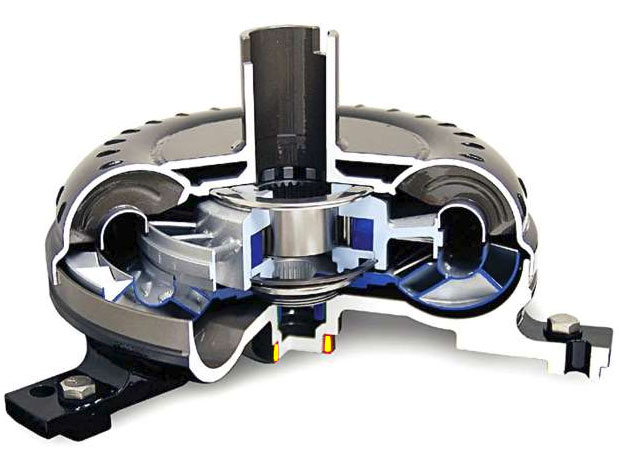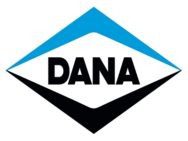Step by Step Directions to Drain a Torque Converter.
Since a Torque Converter, (T-Converter) is your transmission’s number one assistant, a well cared for T-Converter makes for a happy transmission. A misbehaving T-Converter can cause transmission slippage, stalling, strange noises and much more serious damage to the vehicle’s transmission. Over time, debris from disintegrating internal moving parts can contaminate the transmission oil and prevent the T-Converter from working effectively, thereby causing transmission damage. Taking the extra step to include a good flush of the T-Converter is a good idea since it is not normally included in a standard transmission oil change. A T-Converter’s purpose is to assist the vehicle’s automatic transmission to perform well and provide a smooth and carefree shifting experience between gears. A flush of the T-Converter can be a quick and easy process, however certain vehicle models can present some challenges. It all depends on the type of connections on the vehicle’s transmission oil connector lines.

Let’s start by checking the transmission oil to determine if your vehicle’s T-Converter’s oil needs to be flushed. If Debris particles are found upon inspection of the transmission oil, then chances are the transmission and T-Converter needs an oil change. By being Pro-active you can extehnd the life of the transmission, instead of procrastinating and incurring expensive repairs. Let’s take a detailed look at how to Drain a T-Converter’s oil.
Tools needed to complete the job:
Bucket (oil drainage)
Funnel
Flare tool (depends on make and model)
Transmission oil (Extra oil will be needed)
Socket wrench
Screw Driver
Vehicle’s manual
Step 1
There are 2 methods of preforming this task. (depends on vehicle make/model. Refer to the vehicle’s manual to determine the method to preform.)
Method a. Disconnect the transmission cooling line. (Usually connected to the radiator but check the car’s manual for your vehicle’s specific location.)
Verify the tools needed to remove the vehicle’s cooling line by referring to the car’s manual, a flare tool may be needed. The engine flex plate may need to be removed to gain access to the transmission ‘return‘ cooling line. The position and type of cooling lines can vary depending on vehicle’s makes/models. There are two lines connected to the transmission. One is the cooler line and the other is called the return line. You will be disconnecting the return line. Check your manual to determine which line is the return line for your vehicle’s make/model.
Method b. On some models the oil will be drained directly from T-Converter “bell housing”. The next step would be to locate the T-Converter. Usually, the T-Converter can be found between the transmission drain pan and the engine flex plate on the car’s undercarriage. Rotate the T-Converter until you are able to view the hex nut opening. Once locating the Hex opening, use the appropriate sized Hex tool to unscrew the hex until the oil plug is completely removed.
Step 2
Place a bucket or oil pan under the transmission cooling line or T-Converter (depending on the method) with the transmission in the neutral gear. Next, start the engine.
Step 3
Method a. Pour New transmission oil inside the dipstick of the transmission. At the same time, allowing the old oil to drain into your waiting bucket. (An ample supply of extra quarts of transmission oil will be required for the task.)
Method b. Skip Step 3. Since, the transmission oil is drain directly from the T-Converter.
Step 4
Method a. Have an Assistant slowly shift the gears in the transmission through each and every gear and at the same time Fresh transmission oil is continued to be poured into the transmission’s dipstick while the engine is running. Make sure the parking brake is on. Essentially, step 4 is recycling the old transmission oil from the transmission and T-Converter and replacing it with new fresh oil.
Method b. Skip step 4, since the transmission oil was drained directly from the Torque Converter.
Step 5
Both methods a and b would Test drive the car a few mile and then recheck the transmission oil level, once you are satisfied that the old oil is completely drained from transmission and the transmission is now refilled with new, fresh oil to the appropriate level.
Conclusion:
* The T-Converter’s internal parts spin and turn constantly, while the vehicle is in motion. It is attached to the transmission and is responsible for the motion of the vehicle. It requires clean oil to operate at its best. Maintaining your transmission and T-Converter by flushing the oil regularly will definitely add to the life of the vehicle.
* The best Gas Mileage is attained when the transmission and the engine spins at the Speed. As the oil ages and becomes contaminated with metal shaving, dirt and debris the spinning of the T-Converter can slow down. This results in reduced efficiency of the transmission and T-Converter.
* Replacement of the T-Converter may be necessary if it has sustained serious damage. It is in the vehicle’s best interest for the owner to be pro-active with any issue concerning the transmission. Being pro-active can truly save your wallet because a T-Converter replacement is much less costly than overhaul of the entire transmission system.

























